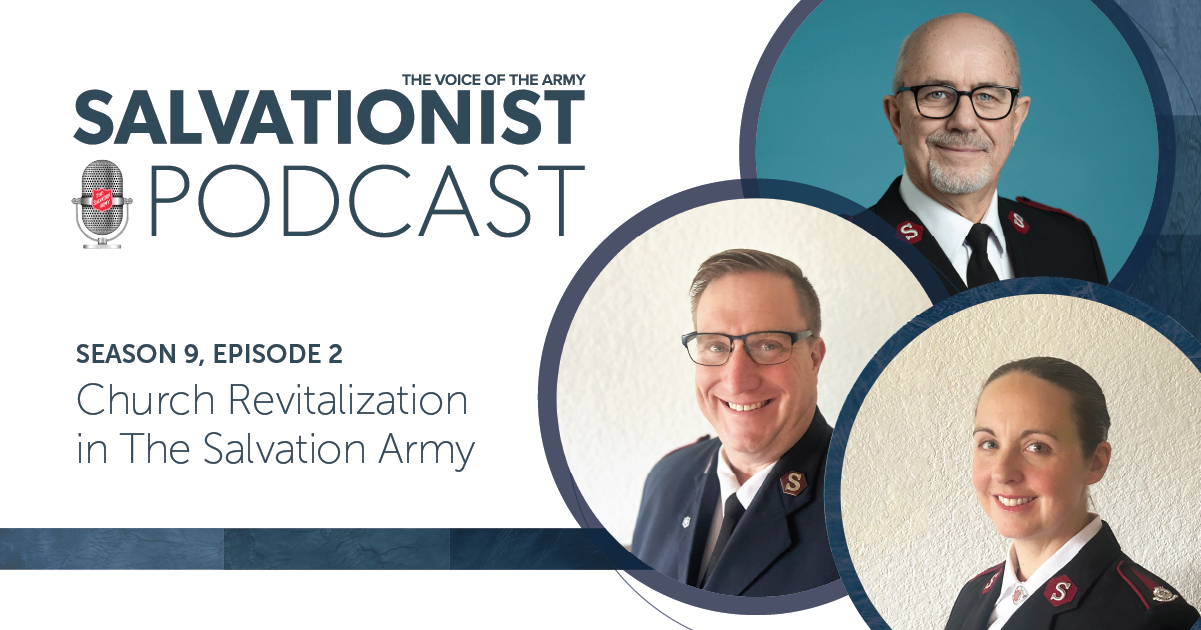"Is it time yet?” Perhaps you have answered this question for your child or grandchild as he or she eagerly awaited Christmas morning or a family vacation to Disney World. Trying to explain “soon” and “later” can be challenging! As adults, we understand the concept of time and the need for patience and waiting. We often say that timing is everything, especially for a golfer or an anxious driver caught in traffic, but timing is only part of the experience. Getting it right also creates an atmosphere of anticipation.
I wonder how the nation of Israel felt as they waited to hear from God. Would he fulfil his promises? I love Paul's words: “But when the set time had fully come, God sent his Son” (Galatians 4:4).
The birth of Jesus didn't just happen. For hundreds of years, the Jewish people had expected, longed for and looked for a Messiah, one who would deliver them and fulfil a national dream. Long before the people recognized their need or even considered God's ability to meet their need, God made such a provision. The Apostle Peter says in reference to Jesus that “He was chosen before the creation of the world” (1 Peter 1:20). From the very beginning there was a clear thread running through the scriptural record that reflected the certainty of an Advent. A Messiah was coming. God had ordained it to be so.
We generally accept the fact that the intervening years between the Old and New Testaments present themselves as silent and are even filled with a measure of darkness. The only real voices of hope were prophetic echoes such as those we read about in the Book of Isaiah: “The people walking in darkness have seen a great light” (Isaiah 9:2) and “For to us a child is born, to us a son is given” (Isaiah 9:6). Isaiah spoke hope into the silence, the darkness and even in the absence of the miraculous—the promise prevailed.
Despite the prophetic word and the anticipation, there appears to be little evidence of any immediate preparedness. The element of surprise for Mary, Joseph and the shepherds remained intact (read further commentary about the Nativity characters by clicking on this link: salvationist.ca/2013/12/rediscovering-the-nativity). There were no leaked e-mails, premature Facebook announcements or information espionage. God had simply and repeatedly intimated his plan to redeem the world and reconcile his creation to himself.
What some might view as bits and pieces of a story are, in fact, the careful articulation of a synchronized rescue plan that would, to this day, become the central focus of a turning point in the story of God and his people. My heart skips a beat when I reflect on the “for to us” part of this prophecy. “God was reconciling the world to himself in Christ, not counting people's sins against them” (2 Corinthians 5:19).
This may not be the first Christmas image that comes to mind, but picture a ragged, disheveled character living alone in the desert. He wears simple clothes and has a diet consistent with his unorthodox life. He is known as a social rebel. His eyes are piercing, his passion is clear, his finger points and his persistent message of repentance is not lost on his listeners. He is Isaiah's prophecy of one calling in the wilderness (see Isaiah 40:3).
We don't equate John the Baptist with the events of Advent or the birth in Bethlehem. John was a preparer of the way for both Christ and his message. He identified the Bethlehem baby as the Saviour of all people, the one who “takes away the sins of the world” (John 1:29). God ordained it and the prophets foretold it, but it was John who announced it.
Our challenge is two-fold. First, it is about our personal preparedness to receive him and, second, it is about our responsibility to share this gift of hope with others. The story as we know it shouts into our reality declaring: “The time has fully come. He is here! Will you receive him?”
 Commissioner Brian Peddle is the territorial commander of the Canada and Bermuda Territory.
Commissioner Brian Peddle is the territorial commander of the Canada and Bermuda Territory.
I wonder how the nation of Israel felt as they waited to hear from God. Would he fulfil his promises? I love Paul's words: “But when the set time had fully come, God sent his Son” (Galatians 4:4).
The birth of Jesus didn't just happen. For hundreds of years, the Jewish people had expected, longed for and looked for a Messiah, one who would deliver them and fulfil a national dream. Long before the people recognized their need or even considered God's ability to meet their need, God made such a provision. The Apostle Peter says in reference to Jesus that “He was chosen before the creation of the world” (1 Peter 1:20). From the very beginning there was a clear thread running through the scriptural record that reflected the certainty of an Advent. A Messiah was coming. God had ordained it to be so.
We generally accept the fact that the intervening years between the Old and New Testaments present themselves as silent and are even filled with a measure of darkness. The only real voices of hope were prophetic echoes such as those we read about in the Book of Isaiah: “The people walking in darkness have seen a great light” (Isaiah 9:2) and “For to us a child is born, to us a son is given” (Isaiah 9:6). Isaiah spoke hope into the silence, the darkness and even in the absence of the miraculous—the promise prevailed.
Despite the prophetic word and the anticipation, there appears to be little evidence of any immediate preparedness. The element of surprise for Mary, Joseph and the shepherds remained intact (read further commentary about the Nativity characters by clicking on this link: salvationist.ca/2013/12/rediscovering-the-nativity). There were no leaked e-mails, premature Facebook announcements or information espionage. God had simply and repeatedly intimated his plan to redeem the world and reconcile his creation to himself.
What some might view as bits and pieces of a story are, in fact, the careful articulation of a synchronized rescue plan that would, to this day, become the central focus of a turning point in the story of God and his people. My heart skips a beat when I reflect on the “for to us” part of this prophecy. “God was reconciling the world to himself in Christ, not counting people's sins against them” (2 Corinthians 5:19).
This may not be the first Christmas image that comes to mind, but picture a ragged, disheveled character living alone in the desert. He wears simple clothes and has a diet consistent with his unorthodox life. He is known as a social rebel. His eyes are piercing, his passion is clear, his finger points and his persistent message of repentance is not lost on his listeners. He is Isaiah's prophecy of one calling in the wilderness (see Isaiah 40:3).
We don't equate John the Baptist with the events of Advent or the birth in Bethlehem. John was a preparer of the way for both Christ and his message. He identified the Bethlehem baby as the Saviour of all people, the one who “takes away the sins of the world” (John 1:29). God ordained it and the prophets foretold it, but it was John who announced it.
Our challenge is two-fold. First, it is about our personal preparedness to receive him and, second, it is about our responsibility to share this gift of hope with others. The story as we know it shouts into our reality declaring: “The time has fully come. He is here! Will you receive him?”
 Commissioner Brian Peddle is the territorial commander of the Canada and Bermuda Territory.
Commissioner Brian Peddle is the territorial commander of the Canada and Bermuda Territory.










Leave a Comment